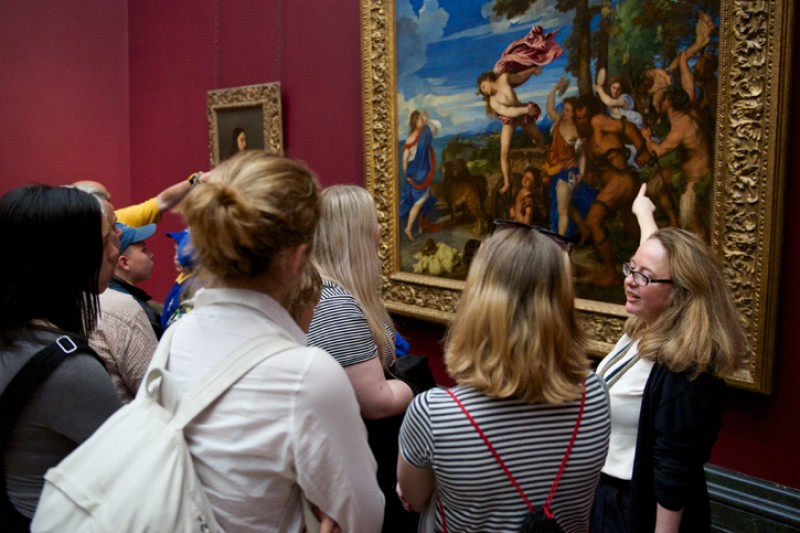Art and design
- Students use their knowledge about the work of other artists to enrich and inform their work through analysis and evaluation
- Students evaluate their work through discussion
English
Oracy
Learners should be given opportunities to:
- respond orally to continuous and non-continuous texts
- respond orally to a variety of stimuli and ideas, including written and dynamic texts, e.g. paintings, music, film, still and moving images
- communicate for a range of purposes, e.g. recount and present information, instruct, argue and explain a point of view, discuss an issue, persuade, question and explore interpretations, convey feelings
- speak and listen individually, in pairs, in groups and as members of a class
- present, talk and perform in formal and informal contexts and for a variety of audiences including teachers and peers
- engage in activities that focus on words, their derivation, meanings, choice and impact
- listen and view attentively, responding to a wide range of communication, e.g. written and dynamic texts, theatre and poetry performance, visiting speakers, explanations, instructions
- speak clearly, using intonation and emphasis appropriately, e.g. recitation, oral storytelling
- use appropriate vocabulary suitable for the situation or purpose
- use appropriate vocabulary and terminology to discuss, consider and evaluate their own work and that of others, e.g. authors, peers
Reading
Learners should be given opportunities to:
read a wide range of continuous and non-continuous texts, in printed and dynamic format, as a basis for oral and written responses. These should include:
– extracts and complete texts
– traditional and contemporary poetry and prose
– texts written by Welsh authors, texts with a Welsh dimension and texts from other cultures
– texts that have challenging subject matter, which broaden perspectives and extend thinking – texts with a variety of structures, forms, purposes, intended audiences and presentational devices
– texts that demonstrate quality and variety in language use
– texts with a variety of social, historical and cultural contexts
– texts that extend learners’ intellectual, moral and emotional understanding
– texts with a variety of tone, e.g. irony, parody, word play, innuendo and satire
read individually and collaboratively, e.g. paired reading, guided group reading, shared reading
read for different purposes, e.g. for personal pleasure; to retrieve, summarise and synthesise key information; to interpret and integrate information; to verify information; to deepen understanding through re-reading; to identify language devices used by the writer to analyse purpose; to identify alternative readings of a text
develop appropriate vocabulary and terminology to discuss, consider and evaluate their own work and that of others, e.g. authors, poets, peers, in written and dynamic texts.
Writing
Learners should be given opportunities to:
write for a variety of purposes, including to:
– recount
– inform
– explain
– argue/persuade
– discuss/analyse
– evaluate
– narrate
– describe
– empathise
write in a range of continuous and non-continuous texts in a variety of forms
produce poetic writing, using imagery and poetic devices, e.g. rhyme and form
use a wide range of written and dynamic stimuli, e.g. stories, picture books, images, poems, experiences, film, paintings, music
use appropriate vocabulary and terminology to discuss, consider and evaluate their own work and that of others, e.g. authors, peers.























